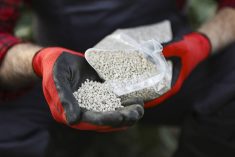Some Manitoba soils need micronutrients but “they are very rare,” says Don Flaten, a soil scientist at the University of Manitoba.
“We tend to have some of the most fertile soils in North America here (in Western Canada) partly because they’re young,” he said in an interview. “They’re recently glaciated and mixed up and they have nice, fresh supplies of all sort of nutrients, including the micronutrients. In older, more weathered soils with lots of leaching down in the southern United States for example, it’s a completely different situation.”
Read Also

OPINION: Immigration policy needs labour gap nuance
A federally imposed, one-size-fits-all immigration crackdown fails when it comes to Canada’s regional labour needs.
The indiscriminate application of micronutrients can create toxicities and imbalances, he said.
“For example boron has been used more frequently as a soil sterilant than as fertilizer in Western Canada. Even a couple of pounds of boron per acre can hurt crop yield. So we have to be careful with that.”
In one study Flaten said adding copper without zinc to a field induced a zinc deficiency and adding zinc without copper caused a copper deficiency.
“It’s a delicate issue,” he said. “As the Wolf Trax people have pointed out, demonstrating the availability of fertilizer product is just one step in the whole successful management system for micronutrients.”
Now that fertilizer companies don’t have to prove to the federal government their products work, farmers need to be more diligent, Flaten said.
“Using a product that doesn’t work is simply a tax on ignorance,” he said.
“Some people will market crap that doesn’t dissolve properly and release the micronutrient for plant uptake.”















